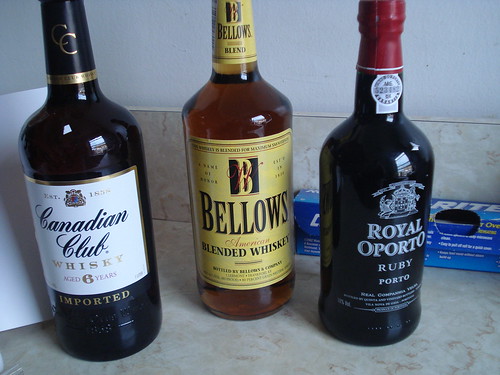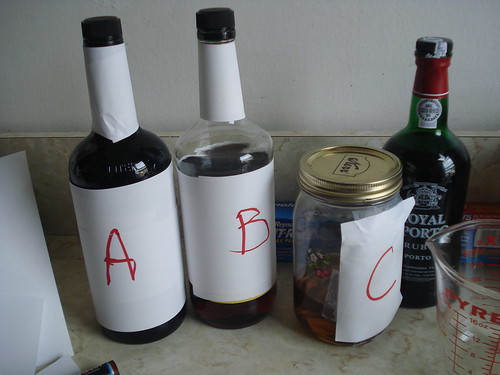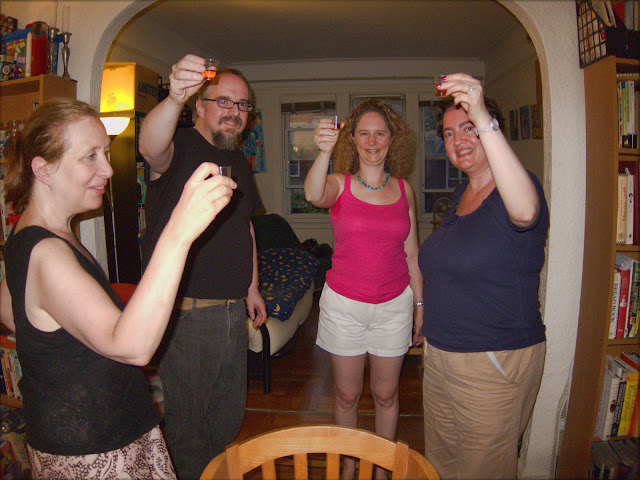photo by Harris Graber, used with permission
how to make Canadian type whiskey
I’m at a loss how to classify Bull Cook and Authentic Historical Recipes and Practices. Grizzled loner? Disgruntled former employee? The book, by George Leonard Herter and Berthe E. Herter, was published by the Herters in Waseca, Minnesota, in the 1960s and features recipes, photos and opinions galore. There are numerous recipes for game, seafood, soups, sandwiches and wines, as well as helpful  hints ranging from “how to keep eggs from sticking in a stainless steel copper bottomed frying pan” (let the pan rest for a few minutes away from the heat) to “Indian method of quitting smoking” (basically, leave a small amount of leaf tobacco in your mouth until the desire to smoke leaves you) to “In case of a hydrogen bomb attack you must know the ways of the wilderness
hints ranging from “how to keep eggs from sticking in a stainless steel copper bottomed frying pan” (let the pan rest for a few minutes away from the heat) to “Indian method of quitting smoking” (basically, leave a small amount of leaf tobacco in your mouth until the desire to smoke leaves you) to “In case of a hydrogen bomb attack you must know the ways of the wilderness  to survive.”
to survive.”
I thought that last one might be a bit too complex to try out for the blog, but I was drawn to the recipe “how to make Canadian type whiskey.” You would need to do this, explain the Herters, because Canadian whiskeys are superior to American but “are so high priced, however, that no one can afford them in this country
photo by Harris Graber, used with permission
any more.” But fear not: you can duplicate the smooth, drinkable Canadian Club by simply adding some port wine to your cheapest American whiskey, shaking it up and letting it sit for three hours, and voila:
You then will have as smooth a drinking and tasting whiskey as any made in the world, regardless of price. In fact, it will taste so much like the famed Canadian-made Canadian Club Whiskey that is so smooth and free of irritants that it can be drank [sic] without any diluting at all. Your American whiskey with the port wine added, you will find, can also be drunk with no diluting at all and will have no bad alcohol taste or fumes.

photo by Harris Graber, used with permission
So of course I had to try it. I bought my supplies: a bottle of Canadian Club ($24 for a liter), a bottle of the cheapest American non-bourbon whiskey I could find on the shelf (Bellows, not a brand I am familiar with, $9 for a liter), a bottle of port ($12), and some little plastic shot glasses ($3 for a few dozen). Once I got home, I rechecked the recipe and found that the magic formula is to add 1 1/2 ounces of port to a fifth of whiskey. I double-checked that a fifth is 750 ml and poured off 250 ml to set aside; this was handy because it meant I could have another point of comparison. Then I poured in the ounce and a half of port (3 tablespoons), closed and shook up the bottle, and masked the three whiskey samples with white paper so that I could subject our party guests to a blind comparison test.
photo by Harris Graber, used with permission
When the guests were ready, I explained the rules: Each participant would taste whiskey from bottle A, bottle B, and bottle C (or, strictly speaking, mason jar C). They would then tell me which one was smoothest, which had the best flavor, and which they liked best overall. We began with A, which the other guests tasted before I had the chance to sample mine; they all found it harsh and hard to swallow, as did I. Whiskey B went down much easier; we debated a few minutes about whether that was because A had already killed what taste buds were susceptible, but decided that B was in fact objectively a smoother drink. C was not quite as smooth as B and had a distinct after-kick that gave the drinkers pause, but was still not as great a shock to the system as A. People liked B the best.
Now it was time to fill the subjects in on the experiment. I read aloud the passage from the book, and then surprised everyone by announcing that whiskey A was the Canadian Club. They quickly deduced that whiskey B was the doctored Bellows and whiskey C the set-aside, unadulterated American brew.
photo by Harris Graber, used with permission
I was as surprised as anyone. I really expected the Canadian Club to be the best, and the doctored whiskey to be harsh and weird-tasting. Granted, I am not a connoisseur, nor did any of the guests claim to have particularly educated palates. It’s possible that someone who really knew his stuff would have responded differently and been able to pick out the impostor. It’s also possible that the way the whiskeys were stored made a difference; there was more air inside the bottles of doctored and undoctored Bellows than in the full bottle of Canadian Club, and maybe the liquids reacted with the greater amount of oxygen during the three hours they sat “maturing.” (Though if that was a factor, the port still made a difference, because the air-to-liquid ratio in the mason jar of undoctored Bellows was much greater than in the doctored bottle.) It’s also possible that if we’d randomized the tasting so that someone started off with B or C instead of A, we’d see different responses. And of course we had only four drinkers, hardly a scientific sample.
Verdict: Success, and surprise. Still, now we have a very drinkable hybrid, and a whole lot of whiskey left in general. I think I’d better see if any of the cookbooks left for the project have recipes for cocktails.